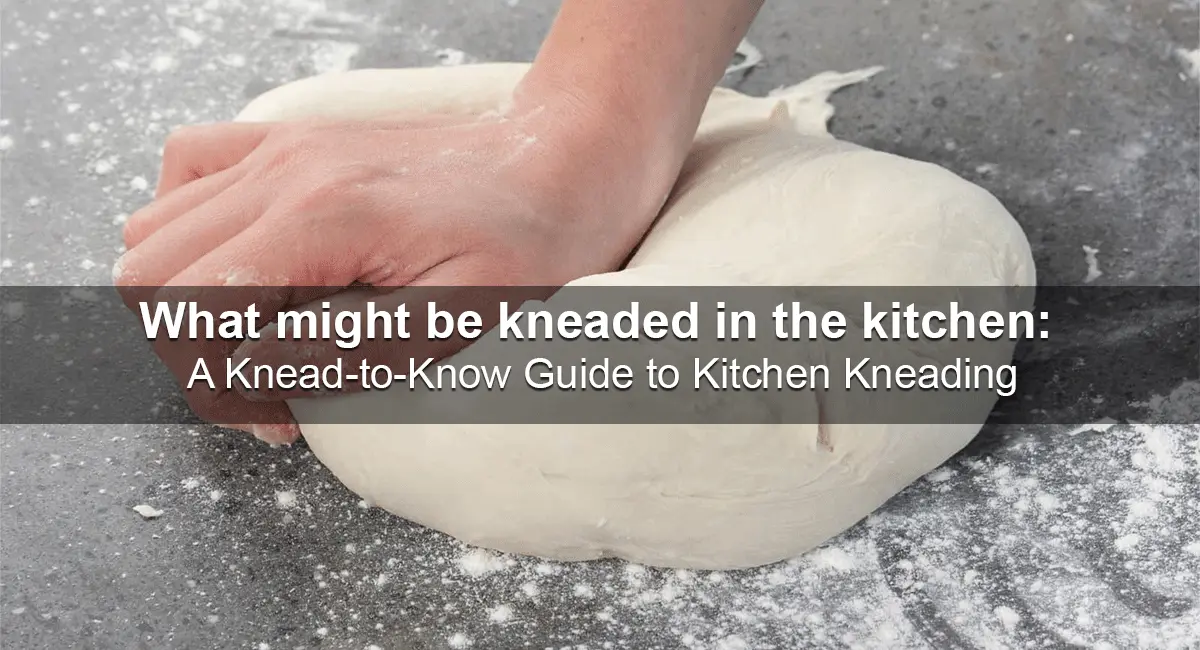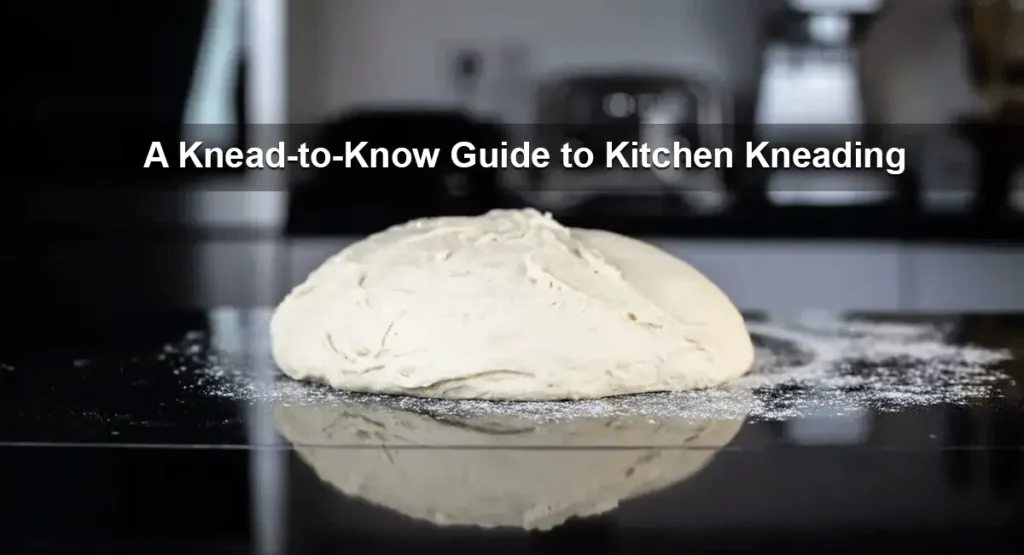
What might be kneaded in the kitchen: A Knead-to-Know Guide to Kitchen Kneading
Kneading is a fundamental technique in the culinary world, essential for creating various delicious dishes ranging from bread to pasta and beyond. Understanding the art of kneading opens up a world of culinary possibilities, allowing home cooks to explore and experiment with different recipes.
In this blog post, we’ll delve into the various ingredients that can be kneaded in the kitchen, exploring both traditional and innovative options to inspire your culinary adventures.
Table of Contents
ToggleWhat is Kneading?
Before we dive into the ingredients, let’s briefly discuss what kneading entails. Kneading is a process of working dough with your hands or a mixer to develop gluten, a protein that gives dough its elasticity and structure. This process helps create a smooth, cohesive dough suitable for baking or cooking.
Traditional Ingredients for Kneading
1. Flour: Flour is the most common ingredient used for kneading. It provides the bulk of the dough and serves as the foundation for various baked goods, including bread, pizza dough, and pastries. Different types of flour, such as all-purpose flour, bread flour, and whole wheat flour, yield different textures and flavors in the final product.
2. Water: Water is the primary liquid used in kneading dough. It hydrates the flour and activates the gluten formation process. The temperature of the water can affect the dough’s texture, with warmer water speeding up fermentation and colder water slowing it down.
3. Yeast: Yeast is a crucial ingredient for leavened bread. It feeds on sugars in the dough, releasing carbon dioxide gas that causes the dough to rise. Active dry yeast and instant yeast are the most commonly used types in baking, each requiring specific handling and proofing methods.
4. Salt: Salt not only adds flavor to the dough but also regulates yeast activity and strengthens gluten formation. It’s essential to strike the right balance, as too much salt can inhibit yeast activity, while too little can result in bland-tasting bread.
Innovative Ingredients for Kneading
While traditional ingredients form the backbone of kneaded dough, innovative cooks have experimented with alternative ingredients to create unique and flavorful dishes. Here are some unconventional ingredients that can be kneaded in the kitchen:
- Herbs and Spices: Adding fresh or dried herbs and spices to your dough can elevate its flavor profile. Rosemary, thyme, garlic, and chili flakes are popular choices for savory bread, while cinnamon, nutmeg, and cardamom lend a warm, aromatic touch to sweet dough.
- Cheese: Incorporating cheese into your dough can result in savory treats like cheesy breadsticks, stuffed bread rolls, or savory scones. Parmesan, cheddar, and mozzarella are commonly used cheeses for kneading.
- Vegetables: Pureed or finely chopped vegetables can add moisture, flavor, and nutrients to your dough. Carrots, spinach, pumpkin, and roasted garlic are excellent options for incorporating vegetables into bread or pasta dough.
- Fruits and Nuts: Dried fruits and nuts bring sweetness and texture to baked goods. Raisins, dried cranberries, chopped nuts, and seeds can be kneaded into dough for fruit and nut bread, buns, or rolls.
- Chocolate and Cocoa: Chocolate lovers can indulge their sweet tooth by kneading cocoa powder or chopped chocolate into their dough. Chocolate bread, brioche, or rolls filled with chocolate chips are sure to delight.
- Coffee: For a unique twist, consider kneading coffee or espresso powder into your dough. Coffee-infused bread or pastry dough can add depth of flavor and a subtle caffeine kick to your baked goods.
Tips for Successful Kneading

Regardless of the ingredients you choose, mastering the art of kneading requires practice and attention to detail. Here are some tips to help you achieve optimal results:
Consistency is Key: Aim for a consistent texture and hydration level in your dough. Adjust the amount of liquid or flour as needed to achieve the desired consistency.
Knead Until Smooth: Knead the dough until it becomes smooth, elastic, and slightly tacky to the touch. This indicates that the gluten has developed sufficiently, resulting in a light and airy texture.
Give it Time to Rise: Allow the kneaded dough to ferment and rise properly. This allows the yeast to do its job, resulting in a well-leavened and flavorful final product.
Experiment and Have Fun: Don’t be afraid to experiment with different ingredients and flavor combinations. Kneading is a creative process, so let your imagination guide you as you explore new culinary creations.
Conclusion
In conclusion, the art of kneading opens up endless possibilities in the kitchen. Whether you’re making traditional bread or experimenting with innovative ingredients, mastering the technique of kneading allows you to create delicious and unique dishes to share with family and friends. So roll up your sleeves, gather your ingredients, and let the kneading begin!





